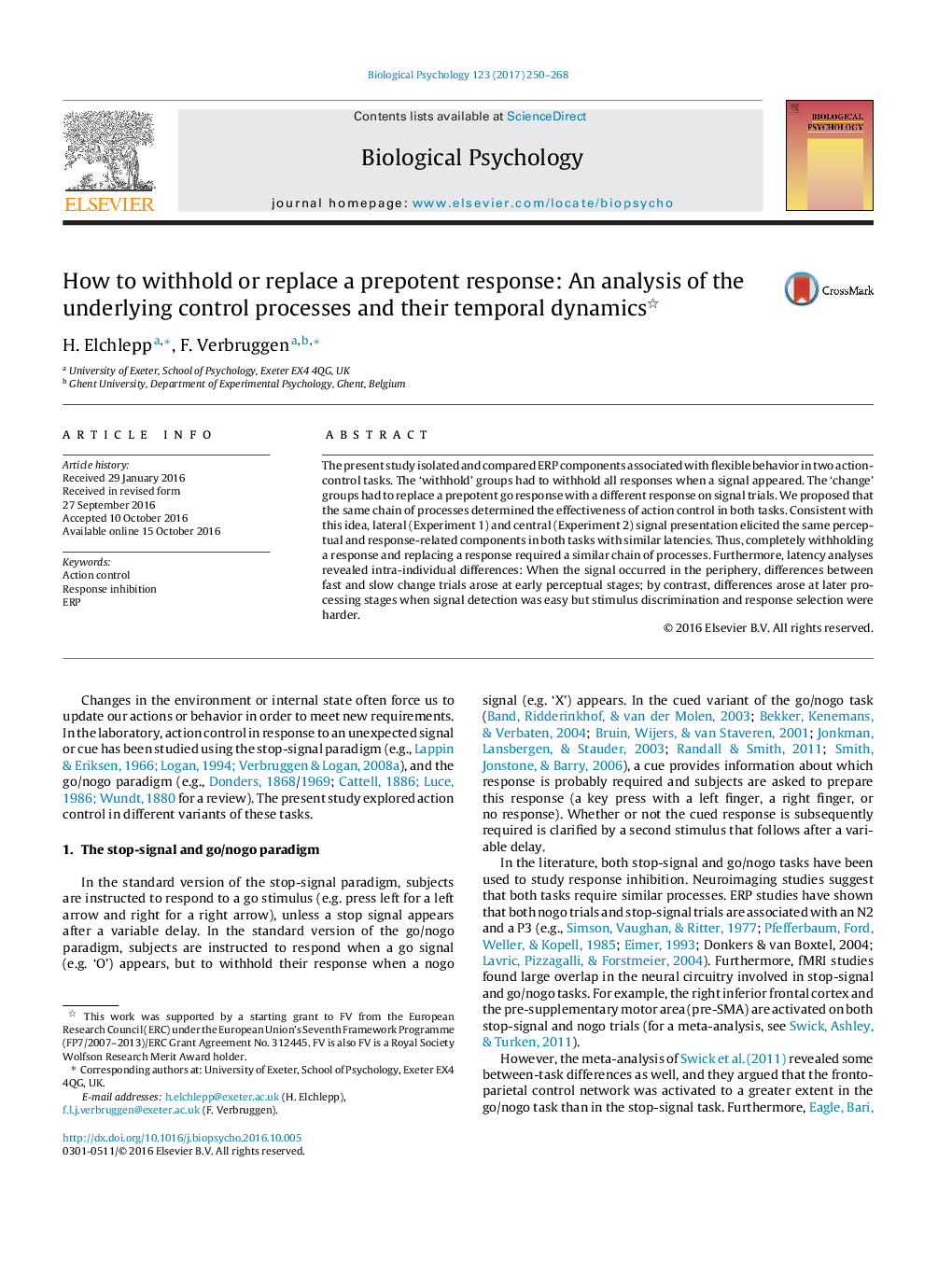| Article ID | Journal | Published Year | Pages | File Type |
|---|---|---|---|---|
| 5040546 | Biological Psychology | 2017 | 19 Pages |
â¢Clear neuropsysiological evidence that the same processes are involved when withholding and withholding and changing a response.â¢Early perceptual processing of the signal can be important for inhibitory control and successful change performance.â¢Introducing a new hybrid paradigm, which greatly reduces the need for correction of signal related activity from overlapping activity of the preceding go stimulus.
The present study isolated and compared ERP components associated with flexible behavior in two action-control tasks. The 'withhold' groups had to withhold all responses when a signal appeared. The 'change' groups had to replace a prepotent go response with a different response on signal trials. We proposed that the same chain of processes determined the effectiveness of action control in both tasks. Consistent with this idea, lateral (Experiment 1) and central (Experiment 2) signal presentation elicited the same perceptual and response-related components in both tasks with similar latencies. Thus, completely withholding a response and replacing a response required a similar chain of processes. Furthermore, latency analyses revealed intra-individual differences: When the signal occurred in the periphery, differences between fast and slow change trials arose at early perceptual stages; by contrast, differences arose at later processing stages when signal detection was easy but stimulus discrimination and response selection were harder.
